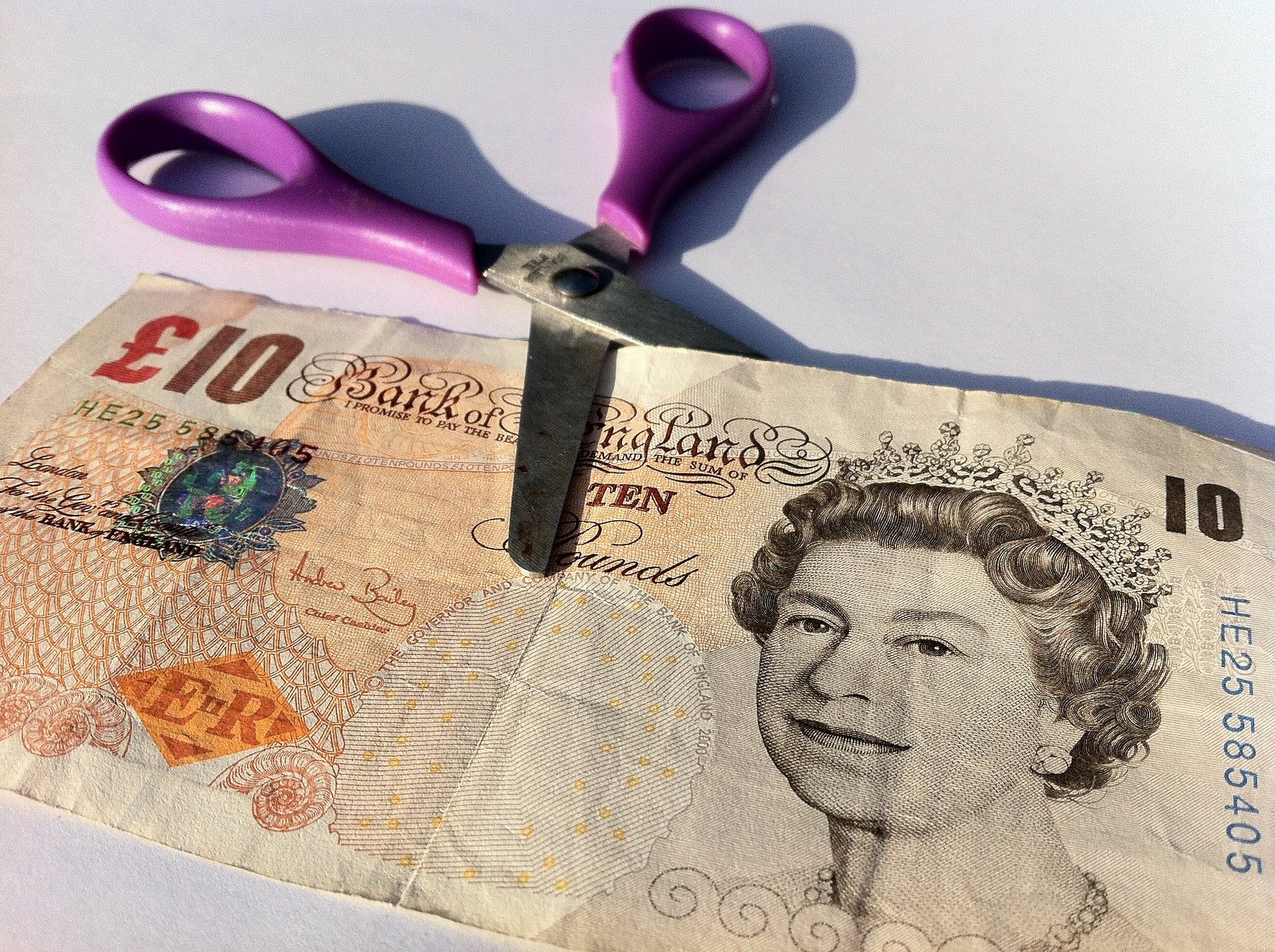In my opinion negative keywords aren’t utilized enough. By adding these type of keywords to your...
Working to a set budget can be difficult and making sure you achieve the best possible outcome within a budget is no easy feat. Just like with any budget, you need to ensure your PPC spend is utilised to its maximum use.
So, how do you know if your PPC campaigns are optimised? Here are some commonly overlooked areas which, when implemented, could dramatically reduce your PPC spend.

Before we get started, if you want to download a copy for later, you can do that here:
#1 Negative Keywords
In our opinion, negative keywords aren’t utilized enough. Adding negative keywords to your campaigns allows your ads to only show up for the most relevant searches.
You should think of a negative keyword as the opposite of a regular keyword. By adding a list of negative keywords, you're informing Google which search terms to avoid showing your advert for.
For example, if you're an online shop selling bicycles you may have keywords such as 'mountain bikes' or 'BMX bike'. However, by using these keywords, your adverts could potentially be shown for searches such as 'BMX bike repairs' or 'best routes for mountain bikes'. And these are not your target market.
By adding the words ‘routes’ and ‘repairs’ as negative keywords this can stop your ad from being shown for any searches containing them.
Take a look at these examples...
What does a Negative Keyword look like?
Negative Keywords Highlighted:
BMX bikes for sale
Mountain bike routes
Mountain bikes for sale
Where to buy cheap BMX
How to fix my BMX bike
Best place to buy mountain bikes
Mountain bike shop
BMX repair shop
Mountain bikes
BMX bike games
BMX bikes
Mountain bike clothing
BMX bike reviews
Mountain bike shoes
There are several ways to create a negative keyword list. Firstly, you can
use the search query report in Google Ads to view the search terms your ads have already shown for. You can then identify any keywords you wish to block.
Alternatively, you can be pro-active and manually think of the likely unwanted search terms in your industry. By adding negative keywords you should notice a reduction in your spend as well as a higher CTR, as your ads are only being shown to the most relevant potential customers.
Pro Tip
To find the actual search terms typed into Google which resulted in your
advert being shown; Go to the Keyword page, click on ‘Details’ and select ‘All’ under the ‘Search Term’ heading.
Here you will get a better insight of what your prospects are actually searching for before being presented with your advert. Then you can further tailor your keywords.
#2 Goal Setup
Part of the attraction of PPC is how easy it is to measure and calculate its
effectiveness.
By ensuring your goals are setup and are measuring all potential outcomes,
whether this is a phone call, an email or a contact form submission, you can
fully understand the overall effectiveness of your PPC campaign.
You can then make informed decisions regarding the performance of your campaigns and pause or reduce the budget where you see fit.
Tracking software only requires a small investment but it can make a huge
difference in reducing your wasted spend.
#3 Remove Higher CPC
Don’t be scared to pause keywords (even if they have conversions). Poorly performing keywords could be spending a large proportion of your budget and increasing your average cost per conversion (CPC).
We've all been there; finding keywords which routinely have a few conversions but have a high CPC. So, are they really working for you? To implement this you will need to set a maximum CPC which you are comfortable with, but this will depend on your industry and your budget.
To reduce your spend with the least impact on conversions you need to be pausing the keywords with the lowest ROI. To do this, look for keywords which either: have no conversions, but which have spent over the maximum CPC; or keywords which have converted at a higher CPC rate than your maximum CPC value.
The example in the above image is for the online bike shop which has an average CPC of £30.00 per conversion but the owner doesn’t think any conversions which cost over £50 are profitable enough, the two highlighted keywords should be paused.
Make sure you check your CPC regularly to avoid spending too much on poor performing keywords. You should check this over a short, medium and long time period to make sure you are capturing all the necessary data.
#4 Campaign Settings
It’s always a good idea to periodically check all campaign settings. This is because during implementation it’s easy to overlook these or over time your marketing strategy may change which will need to be reflected in your
settings.
Here are some areas that we believe are great places to check:
Location – are you targeting the correct locations? If you are serving a local area and are looking to decrease your spend, you could try to reduce the radius of your search and therefore only show to the nearest potential customers.
Devices – Google Ads allows you to adjust your bid to either increase or decrease the visibility of your advert depending on the device used to search. You can do this for computers, mobile devices and tablets. This could be a great saving if your website isn’t mobile friendly - but seeing as Google is now a mobile first search platform, this is a major issue which needs correcting.
Ad Schedule – if your website isn’t e-commence and relies on phone calls, a great way to reduce your spend would be to ensure your ads only run when the calls can be taken. You should align your ad schedule to your office opening hours.
Any changes in how your business operates may need to be reflected in your PPC settings!
Settings Checklist
- Budget - Are you comfortable with the maximum daily spend?
- Language - Is your website/service targeting multiple languages? If so, make sure these are targeted on Google Ads too.
- Networks - Where do you want your advert to appear; Google search, search
partners, Google adverts on external websites? - Campaign End Date - Is there an end date you wish to implement, this could
be used to set trial dates or align your adverts to a particular event. - All Schedule - When do you want to show your ads? Is there a day of the week or time of the day which isn’t working for you?
- Location - Are you targeting the right locations? Too small and there could be
missed opportunities or too large and this could increase your CPC.
Advert Performance
The last thing to consider, but in many ways the most important, is the advert performance.
The best way to check this is to ensure all ad-groups have numerous adverts all slightly different from each other. Allow the adverts to all run for a period of time and then check which advert is performing the best (has the best CTR and CPC) before pausing the least effective adverts.
You should also check the performance of your advert on different days of the week and different times of the day. There may be a time you can identify which isn’t working for you (this could be due to people being at work if your website is a B2C or people in research rather than
buying mode).
If you can identify an issue it would be worth pausing your ads during this time and monitoring the effect this has on your spend and conversion rate.
There We Have It
By implementing these five easy steps your account should not only spend less, but it should perform better too.
The wasted spend has been reduced, your CTR should increase and your CPC should decrease resulting in a more profitable PPC account.
Keep tweaking and changing poor performing ads. This way you can find
what really works for you.
Working to a set budget can be difficult and making sure you achieve the best possible outcome within a budget is no easy feat. However, with these points you can make sure that you gather all the information you need to
ensure the best for you and your business.
Just like with any budget you need to ensure your PPC spend is utilised to its maximum by optimising all of the processes involved.
Remember, none of these aspects work in isolation and changing one setting or feature might impact the performance of another. Keep experimenting and never stand still.


